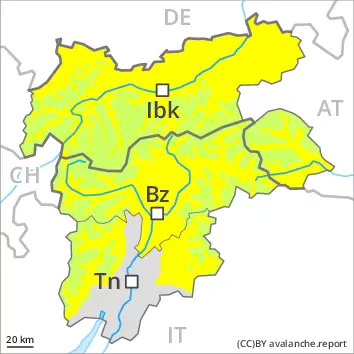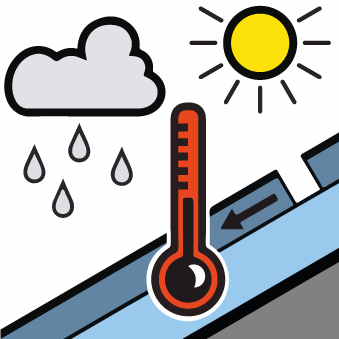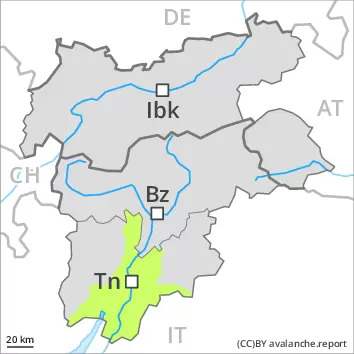
Danger level
 | 2600m |
|  |
|  | ||||
|  |
|  |

Increase in danger of wet and gliding avalanches from early morning. Wind slabs are to be avoided.
The surface of the snowpack will cool hardly at all during the overcast night and will already soften in the late morning. Below approximately 2600 m small and, in isolated cases, medium-sized wet and gliding avalanches are possible. This applies especially on steep sunny slopes, as well as in areas where the snow cover is rather shallow.
In addition the danger of gliding avalanches will increase, in particular in the regions with a lot of snow.
The small wind slabs can be released even by a single winter sport participant on steep shady slopes at elevated altitudes. Individual avalanche prone locations are to be found especially adjacent to ridgelines and in pass areas above approximately 2400 m. They are to be evaluated with care and prudence in particular in terrain where there is a danger of falling.
Extremely steep shady slopes are to be traversed by snow sport participants one at a time.
Snowpack
dp.10: springtime scenario
Near-ridge shady slopes above approximately 2400 m:
Snow depths vary greatly, depending on the infuence of the wind. The rather small wind slabs are bonding only slowly with the old snowpack on steep shady slopes at elevated altitudes.
The upper section of the snowpack is soft; its surface consists of faceted crystals.
Steep east, south and west facing slopes below approximately 2600 m:
As a consequence of mild temperatures and partly cloudy skies the snowpack can not consolidate. The surface of the snowpack is frozen, but not to a significant depth and will already soften in the late morning. This situation will give rise from the early morning to increasing and thorough wetting of the snowpack. In areas where the snow cover is rather shallow the snowpack will soften more quickly.
Tendency
Further increase in danger of wet avalanches.



